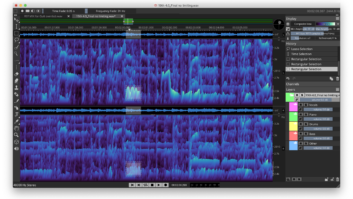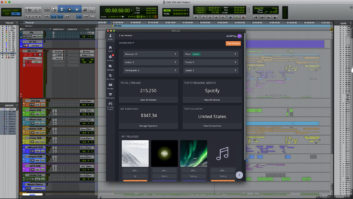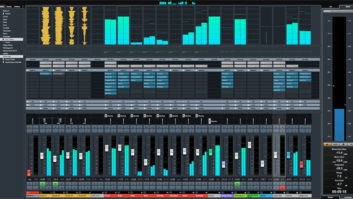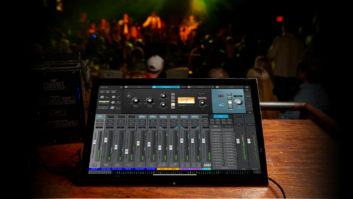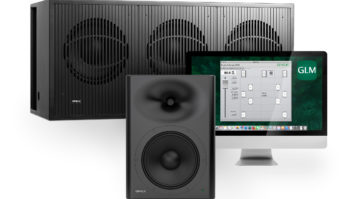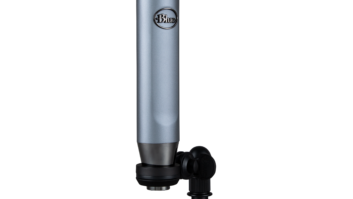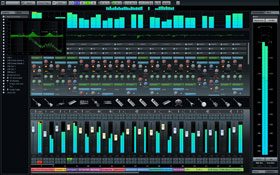
Cubase 7 offers new workflow enhancements, plus new effects and EQs with spectrum analysis.
If you’ve used the term ASIO or VST, then you are referring to a technology developed by Steinberg Media Technology GmbH, a professional audio stalwart since 1984. Whether you are an Atari platform veteran or a Cubase newcomer, it doesn’t take long to see why Steinberg’s attention to detail has served them so well, especially when it comes to the company’s latest release.
Cubase 7 offers a new MixConsole, many workflow improvements, a new channel strip, a meter that’s compatible with the EBU R128 loudness standard, support for many hardware controllers, a full version of Voxengo’s CurveEQ, and much more. But before you can get to any of those features, there’s the install, and the news is good.
Install and Boot
As a longtime integrator, beta tester and studio nerd, I have learned to always allow plenty of time to set up a DAW that you will need to use that same day. I started by booting my system and sliding in the Cubase 7 disc to begin my installation. After simply clicking next and allowing the installer to establish default locations, I was literally booted into Cubase in less than 30 minutes. At first, I thought that the installation hadn’t been completed correctly, as it seemed to go far too quickly; but lo and behold, I was ready to rock.
The first thing you will notice is that the landing page has some cool new features such as the Steinberg Hub. Right out of the gate, it gives you access to downloads, video tutorials, user forums, a knowledge base and other utilities, along with the normal Project window.
When opening Cubase 7, I was surprised to find that the interface looked quite different from the Cubase I was used to. This was by far the biggest change I’ve seen in all the upgrades. To give you an idea, I use three monitors set up in a pyramid formation. The top is a 37-inch HD monitor, while the bottom two are 32-inch HD displays. My workflow is such that I use the top monitor for my main mix window, and the bottom two for stretching my mixer/console view. One of my biggest pet peeves regarding previous incarnations of Cubase was the inability to float the Console in full screen height. As I opened the project and pressed F3 to bring up my console view, I got a full screen mixer, which introduced me to Steinberg’s new approach to mixing.

Steinberg HUB gives Cubase users access to downloads, video tutorials and user forums.
The New MixConsole
Just as its name suggests, the MixConsole is a virtual console mixer. Much like an analog console, each channel strip contains a Limiter, Gate, Compressor and EQ, as well as a Tube/Tape Saturator and Transient Envelope Shaper. The only drawback for me is that it lacks a CTRL+Z undo function, but I remain optimistic.
Besides having killer effects and EQs with spectrum analysis, each strip has a collection of presets that are spot-on. Steinberg brought in producer Allen Morgan (Taylor Swift, Nine Inch Nails) as the exclusive third-party content provider for the MixConsole presets. When Morgan and I had a chance to catch up, he said, “The content I created for Cubase 7’s new mixer consists of a combination of 300 mixer presets and audio track presets designed to be used in any project. You will find everything from a floating electronic vocal, an upright acoustic bass to master bus settings for hip-hop productions and countless variations in between.”
Work Smarter
There are plenty of great workflow enhancements worth mentioning in Cubase 7, but here are some favorites. ASIO-Guard is a caching system that provides an additional buffer to your audio to avoid pops, clicks and lockups; Mem-Zap memorizes and recalls edit positions, zooms and locations, enabling quick-changes between different track views being edited; and Safe-Start Mode lets you temporarily boot using factory preferences to avoid having to do the dreaded Trash-Preferences.
Steinberg has also improved its VariAudio 2.0 function. You can now simultaneously edit multiple monophonic voices—quantizing, correcting and even creating harmonies and background vocals, all from your original tracks. VariAudio 2.0 integrates with Chord Track and analyzes your song, providing suggestions for melodic progression and chordal variations; however, the melodic suggestions are sometimes a bit wacky.
VST Connect SE is a collaborative plug-in found in the Other section of your inserts. It allows peer-to-peer connection via the Internet so you can record and connect with musicians, clients and engineers. For example, your client downloads a free software called VST Connection SE Performer onto their computer, and from there, you can EQ, compress, add reverb and record them onto your Cubase project, all in real time with talkback while video chatting. This is, seriously, one of the coolest functions I’ve ever seen in any DAW. But, be mindful that fast Internet speed/bandwidth is a necessity.
Proof in the Pudding
After monkeying around with Cubase 7 for a few days, I threw caution to the wind and took it out for a real-world test drive, recording my band live during a gig. But to up the ante, I decided that I would also play through the house sound system live using my DAW returns at 64 samples. I then asked the other musicians to select one of Allen Morgan’s presets of their choice for their individual channel strip. We tuned, checked levels and lit up the red light. An hour later we ended our set without so much as a hiccup. I was using Cubase 7 Full version, a Steinberg UR824 and a Rain Livebook AFX running Windows 8. For our second set, I decided to throw one last curveball. I shut down, switched my interface to a PreSonus AudioBox 1818VSL, and reopened the project. We lit up the Record light again, and played through our second set—again, without an issue.
What’s the Verdict?
The toughest pill for me to swallow when I first booted up was the change to the MixConsole. However, once I got used to it, the GUI felt completely natural. I did rely heavily on the training material in the Steinberg Hub to get me going, but once I became familiar with the new features, I wondered how I ever mixed without them. For newbies, Cubase is not a platform that you are going to jump into and learn overnight. Before you get started, you best eat your Wheaties and pack a lunch, but the payoff is that Cubase 7 delivers. It’s stable, powerful and up to professional standards—it’s that simple.
Jami McGraw is the VP of Technology at Rain Computers, and a New York City-based based producer.
PRODUCT SUMMARY
Company: Steinberg Media Technologies GmbH
Product: Cubase 7
Website:steinberg.net
Price: $499.99
Pros: Well-written software, feature-rich and super stable. MixConsole upgrade is life changing.
Cons: More features than you know what to do with. Steep learning curve. Needs a CTRL+Z undo function on the mixer.
TRY THIS
When playing, mixing and recording live, use channel strip presets on your input/output channels. After a quick headphone monitor mix during soundcheck to get levels, you can create a mix-ready print in real time. Throw a mastering preset on the Master output, and you can literally bounce your project the moment you hit Stop.
